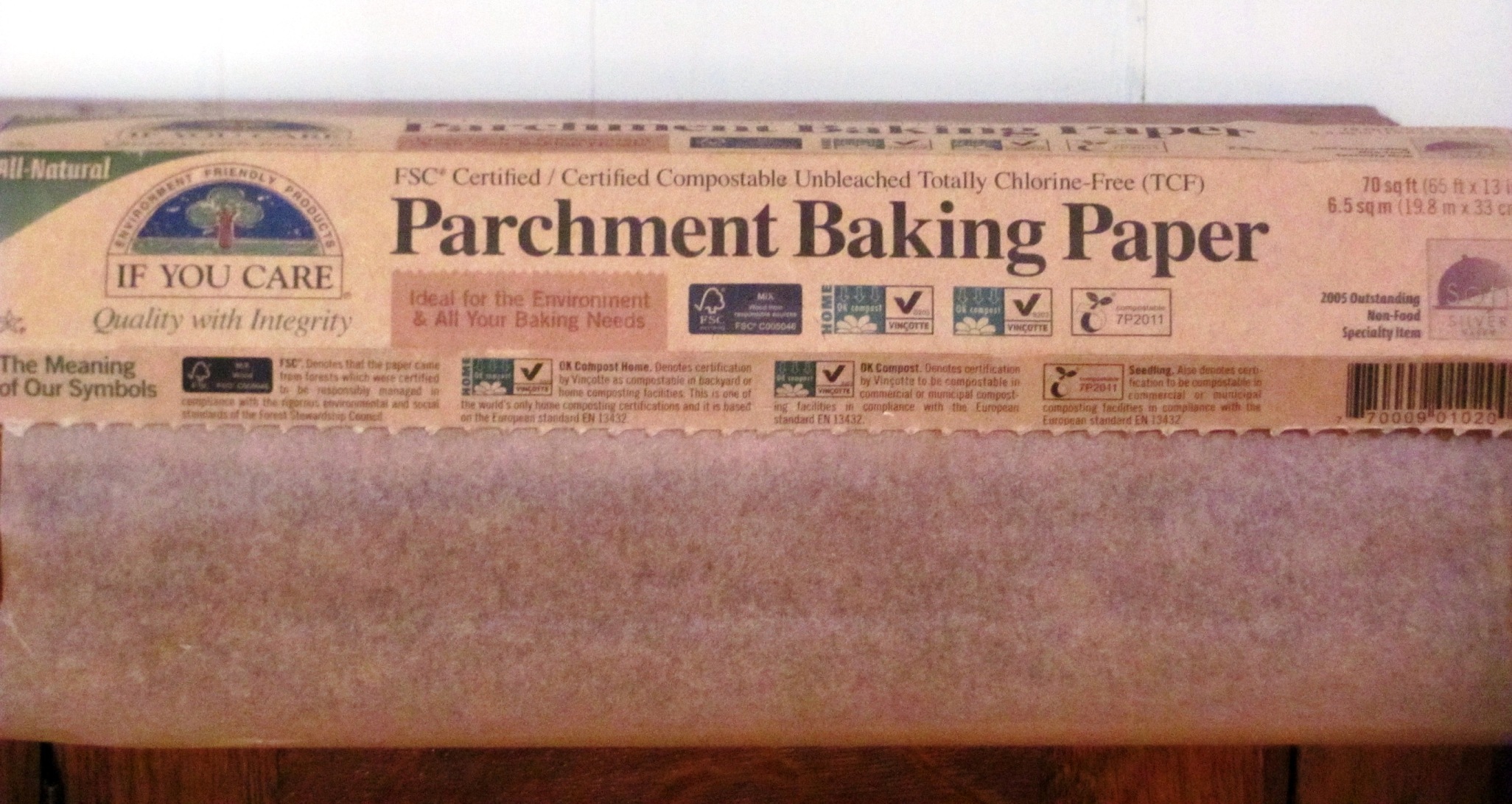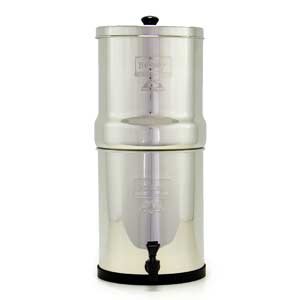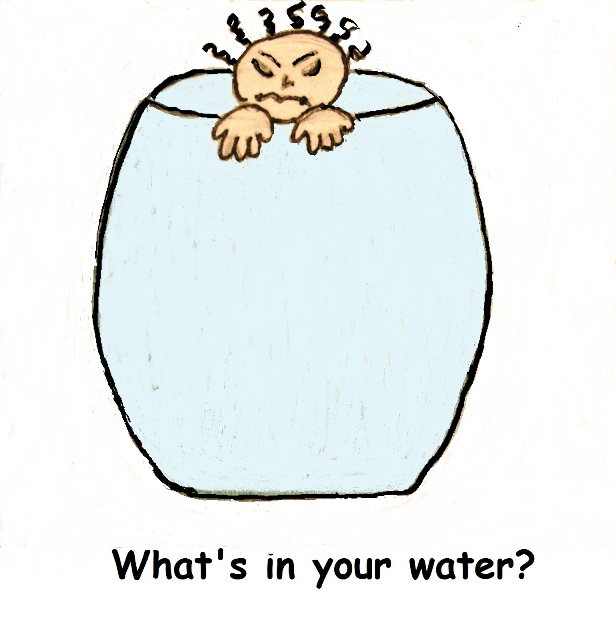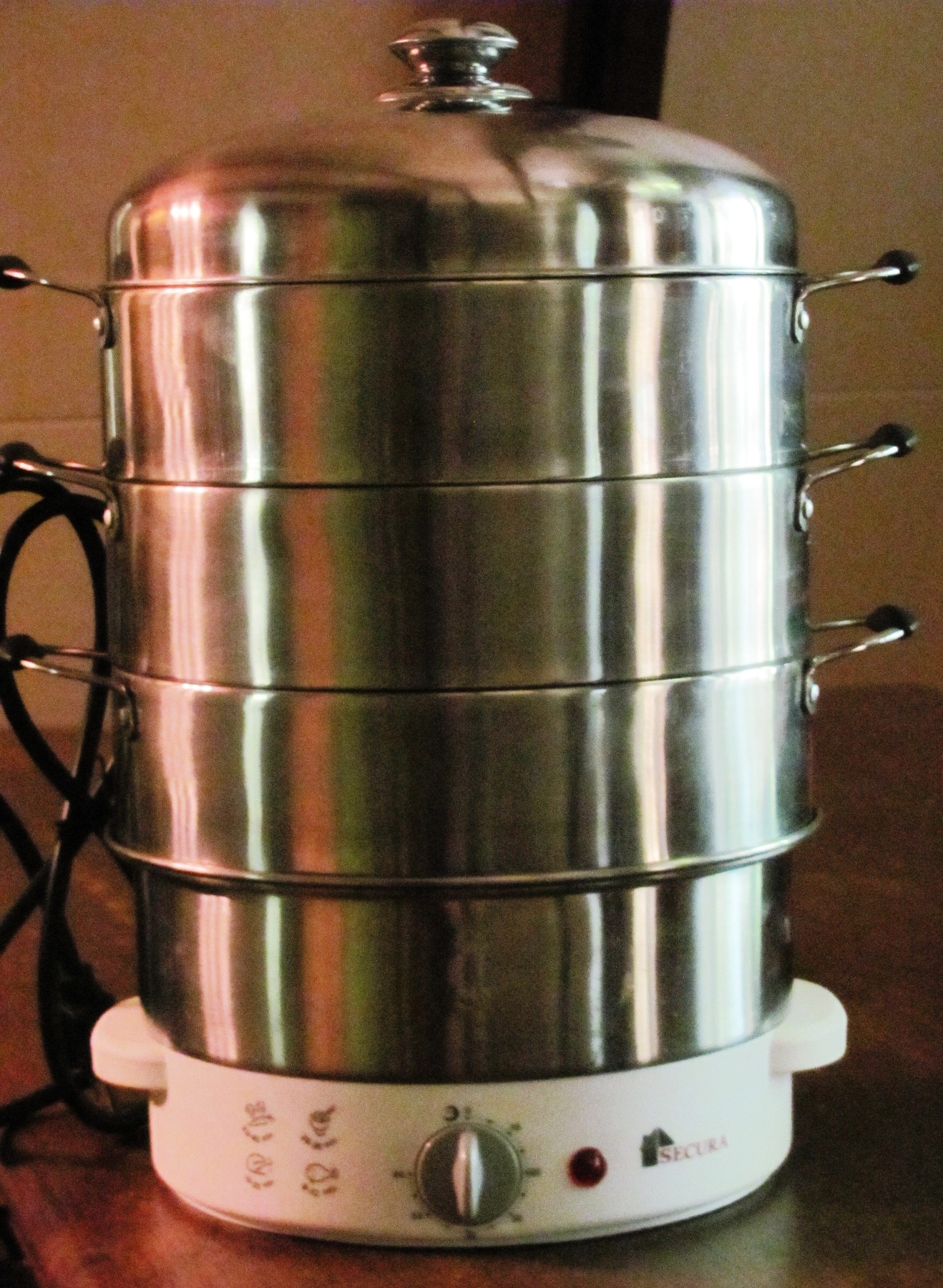- Home
- Toxic Chemicals in Food
- Dangers of Plastic Water Bottles
Dangers of Plastic Water Bottles
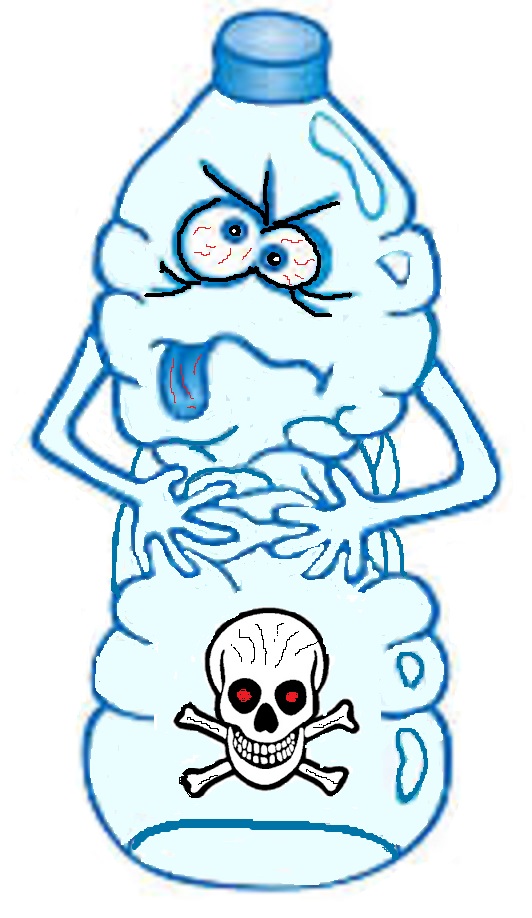
After decades of illuminating research, isn’t it about time
you stop ignoring the dangers of plastic water bottles? While staying
well-hydrated is a healthy choice, drinking water bottled in plastic is not.
Seriously, why are we still talking about this? Why are
store shelves still stocked with water bottled in plastic? Why are people still
buying reuseable plastic water bottles?
Studies have shown that chemicals will migrate from any type of plastic under the right conditions. That includes PET (Polyethylene terephthalate), polycarbonate, polyethylene, biodegradable polyethylene or co-polyester plastic used to make reusable and single use water bottles.
PET is a great example of the myth of safe plastic. This was once, and in many cases still is, considered a very stable and safe plastic. This undeserved reputation probably results from the fact that PET is made without plasticizers and antioxidants and only a low number of added colorants.
But, numerous studies have shown there are many dangers from using all types of plastic water bottles, including PET. And these dangers are a result of chemical migration from the plastic bottle to the liquid stored in it. Because I wanted to dispel the belief that PET plastic is safe, much of the research mentioned in this article was about PET.
Migration is considered to be a four-step process involving diffusion–desorption–sorption–adsorption, where chemicals in the packaging material are ultimately absorbed by the food they contain (and vice versa).
The Dangers of Plastic Water Bottles
1. The huge amount of chemicals intentionally used to make plastic
Over 10,500 different chemicals are used to make plastic,
including monomers, additives, and processing agents (catalysts. The chemicals
used include known human carcinogens, endocrine disruptors, neurotoxicants, and
persistent organic pollutants.
Many of these chemicals, like additives that make up 55% of
plastic chemicals, are NOT chemically bound to plastic. That means they can end
up in your bottled water.
For example, phthalates are not chemically bound to plastic.
That means these endocrine-disrupting chemicals easily migrate from PET
bottles into the water you drink.
Dibutyl phthalate (DBP), di(2-ethylhexyl) phthalate (DEHP),
benzylbutyl phthalate (BBP), dimethyl phthalate (DMP), diethyl phthalate (DEP)
and di-n-octyl phthalate (DNOP) have all been detected in PET drink bottles.
DEHP is the most studied phthalate migrating from PET drink bottles.
Other endocrine disruptors that migrate from PET include BPA,
BPS, and octocrylene. Octocrylene is a common ingredient in chemical
sunscreens and anti-aging creams.
Octocrylene breaks down into Benzophenone, an endocrine disruptor.
2. The huge amount of chemicals that end up in
plastic non-intentionally.
Besides intentionally added substances (IAS) non-intentionally added substances
(NIAS) also increase the dangers of plastic water bottles.
NIAS are chemicals
that end up in plastic from impurities in materials used to make plastic, chemical
reaction by-products, or the break-down of additives. NIAS are a bigger migration problem then IAS chemicals.
A 2022 review of 91 studies on the migration of 193 chemicals
from PET drink bottles found that 150 chemicals migrated from PET bottles. And
a whopping 113 out of the 150 detected chemicals were NIAS.
Most NAIS that
could end up in your drink have not been studied. But it is known that a
common type of NIAS are plastic oligomers. (Small molecules called monomers
are the building blocks of plastic. Link a few monomers, you have yourself an
oligomer. They are formed when plastic is made and when plastic breaks down.)
And PET oligomers are
found in food and beverages. Because of their small size they are considered very
toxic. Silicone (polydimethylsiloxane) oligomers
are also among the most commonly detected migrants from plastic. Commission
paper
Another important type of NAIS are contaminants. Examples of
contaminants frequently detected in migration studies of plastic food contact
materials, include the toxic solvents toluene and xylenes and the carcinogens antimony
and formaldehyde, plus the probable carcinogen acetaldehyde.
3. Improper storage increases the dangers of plastic water bottles.
There are several things that affect the amount and types of
chemicals that migrate from PET and other types of plastic bottles. They
include storage temperature, sun exposure and storage time.
Basically, studies have found that increases in any of these will increase chemical
migration from plastic to whatever is stored in it.
And many of these
chemicals can be toxic to your health. So, think about these questions as we
explore the dangers of plastic water bottles.
Do You:
- Know how long the plastic water bottles you buy at the store have been sitting on the shelf.
- Know what the temperature was inside of the truck that transported your water to the store.
- Ever store water at temperatures above 60 degrees Fahrenheit?
- Ever store water for 6 months or longer?
These questions are important because for example, one year
of storage can increase antimony migration by 88%. Antimony,
an endocrine disrupter and possible carcinogen, is used as a catalyst in the
making of PET plastics.
Another study reported on antimony levels in 132 brands of
bottles water stored at room temperature for 6 months. Levels of the endocrine
disrupter increased 90% in 48 brands and 19% in 14 brands.
Temperature also plays a role in antimony migration. One study found that antimony begins to release slowly into water at
60 degrees F. At 75 degrees F it takes 4 days for antimony levels to exceed the
6 PPB (parts per billion) safe exposure level. At 85 degrees F it takes just
one day. After a week of storage at 80 degrees, antimony levels were 14.4 ppb,
more than double the safety standard.
Storage time, temperature and exposure to
sunlight also expose you to higher levels of endocrine disrupting chemicals.
Longer storage times, higher temps and sunlight, significantly increase the levels of BPA and
phthalates that migrate from plastic bottles.
4. Added dangers of reusable plastic water bottles.
While all the
dangers listed above apply to reusable plastic water bottles also, there’s even
greater risk when you use this type of water bottle. A 2022 study that investigated the chemical migration into
drinking water stored for 24 h in new bottles, used bottles, and bottles washed
in the dishwasher makes this abundantly clear.
They found:
- A total of more than 400 plastic-related chemicals and more than 3500 dishwasher-related compounds
- After a dishwasher cycle of the same bottles, thousands of additional, dishwasher soap-related, chemicals migrated into drinking water stored for 24 h in the reusable water bottles.
- The dishwashing process enhanced the migration of plasticizers, antioxidants, and photoinitiators into the drinking water
- The greatest toxic exposure came from filling reusable plastic bottles after they came out of the dishwasher and without further rinsing.
- Rinsing with water after running through the dishwasher removed more than 90% of the surfactants that came from the dishwasher soap.
- Plastic adsorbs things more than other materials so several nasty chemicals adsorbed to the plastic surface.
- 175 chemicals continually migrated out of the plastic from new and used reusable plastic bottles after running through the dishwasher and flushing with water.
The most concerning migrating chemicals were photoinitators. For
example, Irgacure 369 is an amine co-initiator, a group well-known for their
endocrine-disrupting effects, and 4-methylbenzophenone has shown
carcinogenicity, reproductive toxicity, and skin contact toxicity in animal
testing. Anthraquinone is of concern because its breakdown products may be
toxic and carcinogenic.
5. Added dangers of recycled plastic bottles.
The world is drowning in a sea of plastic waste that takes
forever to break down. Recycling is considered a way to help solve this
problem. Unfortunately, recycling processes may concentrate or introduce new
chemicals to PET and other plastic water bottles, increasing the dangers of
plastic water bottles.
Recycling can introduce additional NIAS into plastic due to
contamination during use, disposal and recycling. Typical recycling-related
NIAS in plastic include oligomers, BPS, BPS, phthalates, and other additives in
recycled plastics.
For example, one study of recycled PET bottles found
acetaldehyde, formaldehyde, 2-methyl-1,3-dioxolane, PET oligomers, the carcinogens
toluene and xylene, and cyclopentanone in the bottles. And studies done on some
of these chemicals found that BPA, antimony benzene and styrene migrate at
higher levels in recycled (rPET) compared to virgin PET bottles.
6. Unknown dangers of plastic water bottles.

What we know about the dangers of plastic water bottles is pretty scary. But what’s even more frightening are all the unknowns.
Many of the chemicals used to make plastic water bottles are unknow and/or not authorized to be used in materials that come into contact with food. Also, many of the chemicals migrating from PET have not been studied or reported on and there is no information available on the effects of exposure to these chemicals.
And there is the emerging and frightening unknown of microplastic fragments from PET and other plastic bottles that are detected in plastic bottles of water and food packaging containers. And according to one 2022 study nanoplastics and organic compounds migrate the most from PET plastic when compared to Polypropylene and ABS plastic.
Research is just beginning to uncover what exposure to nano and microplastics is doing to our health! Right now it's just one more of the unknown dangers of plastic water bottles.
Avoiding the Dangers of Plastic Water Bottles
You really only have three choices when it comes to avoiding
the dangers of plastic water bottles. Buy bottled water in glass containers,
which is very expensive or boxes.
Or invest in a good water filter, filter your water and
store it properly.
Filter your tap water.
I use a Big Berkey countertop
filtering system with black filters and I love it. It’s convenient and the
water tastes great. The system is stainless steel and it’s rated to remove more
toxins than any other system I found, except a whole-house reverse osmosis
system. Info on the specific contaminants the system removes can be found
at http://www.bigberkeywaterfilters.com/helpful-resources/test-results/.
For other good water filter options check out the post Common Tapwater Toxins and The Filters That Remove Them.
Store your filtered water properly.
Glass
There are lots of glass water bottles available. Many of them come with protective silicon sleeves. it's best to choose wide-mouthed glass bottles because they are easier to clean properly. Wide-mouthed canning jars came be turned into a water bottle with a metal or bamboo lid and straw.
Stainless Steel
If you opt for stainless steel make sure there is no coating or lining in the bottle. The chemicals used to coat metal bottles can migrate just like plastic.
Klean Kanteen does not use plastic or epoxy linings and offers a variety of stainless-steel water bottles. To avoid plastic altogether choose one that comes with a stainless steel cap or you can buy the cap separately (Kleen Kanteen All Stainless Loop Cap).
Stainless steel is a good unbreakable option for kids. Check out Klean Kanteen Kid's Stainless Steel Bottle with 3.0 Sport Cap. There are other stainless steel water bottles available but they all have some plastic parts.
Remember plastic and water, just like plastic and food, is not a good combination. So, before you reach for that plastic bottle of water from the store shelf, consider the dangers of plastic water bottles to your health. And Please, if you're not convinced read this:
According to the The Minderoo-Monaco Commission on Plastics
and Human Health (2023)
Coal miners, oil workers and gas field workers who
extract fossil carbon feedstocks for plastic production suffer increased
mortality from traumatic injury, coal workers’ pneumoconiosis, silicosis,
cardiovascular disease, chronic obstructive pulmonary disease, and lung cancer.
Plastic production workers are at increased risk of leukemia, lymphoma, hepatic
angiosarcoma, brain cancer, breast cancer, mesothelioma, neurotoxic injury, and
decreased fertility. Workers producing plastic textiles die of bladder cancer,
lung cancer, mesothelioma, and interstitial lung disease at increased rates.
Plastic recycling workers have increased rates of cardiovascular disease, toxic
metal poisoning, neuropathy, and lung cancer. Residents of “fenceline” communities
adjacent to plastic production and waste disposal sites experience increased
risks of premature birth, low birth weight, asthma, childhood leukemia,
cardiovascular disease, chronic obstructive pulmonary disease, and lung cancer.

